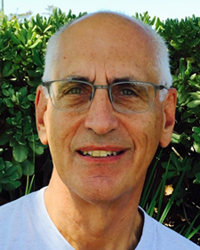Criss Hartzell, professor of cell biology at Emory University School of Medicine in Atlanta, Ga., recently was awarded an MDA research grant to study the ANO5 gene. Mutations in the gene have been implicated in both type 2L limb-girdle muscular dystrophy (LGMD) and a subtype of Miyoshi distal muscular dystrophy (a type of distal muscular dystrophy, or DD). Hartzell will examine the role the ANO5 protein plays in trafficking and fusion of cell membranes during muscle repair, and how mutations in this protein disrupt these functions. The work may uncover new disease mechanisms and form the basis for future therapeutic approaches in LGMD and DD.
Please describe your current research.
 Muscular dystrophies are caused by mutations in more than 30 different genes that encode proteins performing a variety of different jobs in the muscle cell. Some muscular dystrophies are caused by defects in proteins that serve to strengthen the membrane surrounding the muscle cell so that it doesn’t tear during movement. In this group of muscular dystrophies, including Duchenne muscular dystrophy, the defective proteins cause the muscle membrane to be excessively fragile so that it tears easily and becomes leaky.
Muscular dystrophies are caused by mutations in more than 30 different genes that encode proteins performing a variety of different jobs in the muscle cell. Some muscular dystrophies are caused by defects in proteins that serve to strengthen the membrane surrounding the muscle cell so that it doesn’t tear during movement. In this group of muscular dystrophies, including Duchenne muscular dystrophy, the defective proteins cause the muscle membrane to be excessively fragile so that it tears easily and becomes leaky.
Another group of muscular dystrophies that also exhibit leaky membranes are not explained by cell fragility, but rather are caused by defective membrane repair processes that fix tiny injuries that occur daily even in normal people during activity. My research focuses on a muscular dystrophy in this second group called limb-girdle muscular dystrophy type 2L (LGMD2L) that is linked to mutations in a protein called ANO5. The genetic cause of this disease was discovered only several years ago and we know very little about how ANO5 functions, but we have evidence from experiments on mice that ANO5 promotes repair of damaged muscle membranes in several ways. ANO5 aids processes that patch holes in membranes and also is involved in the fusion of muscle stem cells with damaged muscle to support regeneration.
We will explore these ideas using several new preparations of human muscle grown in tissue culture. We will use immortalized muscle stem cells that we have genetically engineered to harbor mutations that cause LGMD2L. We will also use muscle cells grown in culture from biopsies of skin cells from LGMD2L patients using stem cell technology. A small biopsy of superficial skin tissue is painlessly removed from a patient, cells from this biopsy are induced to become a type of muscle stem cell. Both of these cell types can be induced to form miniature muscles in culture that behave very much like muscles in the body and can be manipulated to understand how ANO5 dysfunction affects muscle membrane repair and how LGMD2L muscle differs from normal muscle.
In the future, we hope that these cells can be used to develop drugs or other treatments to correct the defect caused by the ANO5 mutation.
Is this your first MDA grant?
I was an MDA Fellow in 1974-1975 when I was a postdoctoral fellow at Harvard Medical School, so I feel that I am returning to my roots. This grant will give me the opportunity to pursue a project that I have been interested in from a distance for over 40 years.
What inspired you to study LGMD?
I have been studying a family of proteins called ANO/TMEM16 for many years. Some of these proteins are ion channels that transport chloride ions across cell membranes. But, very unexpectedly it was found that certain other ANO proteins transport membrane lipids. When we discovered that ANO5 is one of these lipid-transporting proteins, we realized that this function could explain limb-girdle muscular dystrophy type 2L.
Does your work have any potential implications for other disease fields?
The ANO proteins are widespread in the body and are involved in processes as diverse as blood clotting, gut contractions, pain perception, and secretion of fluids like saliva. Mutations in ANO proteins are linked to other diseases besides muscular dystrophy — including a blood clotting disorder and several nervous disorders. Understanding how ANO5 works will likely impact these other fields as well.
Why is it important that MDA continue to fund research in LGMD?
Although the genetic basis of this disease was only discovered 5 years ago, genetic testing is revealing a surprisingly large number of individuals who have ANO5 mutations. I have heard some people say that it might be one of the most common limb-girdle muscular dystrophies, although I am not sure that will hold up. In any case, understanding the molecular underpinnings of any form of muscular dystrophy, rare or common, will increase our ability to treat these diseases that have such negative impact on quality of life.
What do you feel people impacted by LGMD or DD can have the most hope about with respect to research right now?
I have been in biomedical research since 1968, but never have I seen new fundamental discoveries happening so quickly. This seems to be the golden age of biomedical research in that we have awesomely powerful techniques that allow us to see what happens in living cells at the molecular level and to identify the molecular defects that cause disease. As we learn more about how muscle works and breaks, new therapies hopefully will evolve quickly.
To learn more about how MDA research is accelerating treatments and cures for LGMD and DD, please visit mda.org.
